Teagasc has just published exchanges between its researchers and fertiliser manufacturer Yara over the best options to reduce greenhouse gas emissions from nitrogen application.
The communication took place in the lead-up to the publication of Teagasc’s “marginal abatement cost curve” (MACC) last summer.
The MACC lists all possible actions and their cost, including the replacement of 50% of CAN applied to grassland with protected urea. This is identified as the one change in farming practices that would deliver the single largest reduction in greenhouse gas emissions. Yara researchers highlighted four concerns and their Teagasc counterparts responded in an exchange of letters and at a meeting in 2017.
1 Urea emits CO2 as it breaks down
Two greenhouse gases can be released by fertiliser: nitrous oxide (N2O) and carbon dioxide (CO2). A Teagasc study showed that switching from CAN to urea reduces the N2O emissions drastically, by over 70% on average. However, Yara pointed out that urea releases CO2 as it breaks down, which means overall greenhouse gas emissions are in fact cut only by half.
Teagasc came back with figures including all CO2 released by urea, including its manufacturing, and concluded that replacing 50% of CAN used on grassland with protected urea would still deliver a drop in greenhouse gas emissions.
2 Need for more samples
The main Teagasc study in this area was conducted over two years in Moorepark, Johnstown Castle, and at the AFBI campus in Hillsborough.
Yara experts said policy should be based on “more locations and over more years”.
Teagasc replied that its results were consistent with those of six other studies, half in Ireland and half in Scotland, as well as earlier work done by AFBI over four years.
Longer-term trials are under way at Johnstown Castle to verify emissions from various fertilisers over longer periods.
3 Increased ammonia pollution
Urea releases less greenhouse gas, but more ammonia – another harmful pollutant controlled by EU legislation.
So-called protected urea is coated with a chemical (the one in Irish trials is NBPT), which Teagasc says reduces ammonia emissions by 79% on average. This also makes more nitrogen available to plants.
However, Yara was concerned that replacing CAN with urea would still cause Ireland to exceed its ammonia targets.
Teagasc acknowledged that replacing 50% of grassland CAN with protected urea would create a “marginal increase in ammonia”.
However, they argued that traditional urea currently used in Ireland should also be replaced with the protected type, leading to an overall decrease in ammonia emissions.
4 Another chemical in agriculture
Introducing a new chemical to our farms could be bad for the image of our exports if residues make their way into food, Yara warned.
It cited a case in New Zealand where traces of the inhibitor DCD were detected in milk, and research showing that NBPT can enter plants via roots and leaves.
Teagasc acknowledged that further research is needed into this risk. However, it added that DCD is used in larger quantities and sprayed directly on to grass, unlike NBPT.
Only one of four samples of grass tested in the Teagasc trial showed a trace of NBPT, and it was 100 times smaller than the maximum residue level for pesticides.
Cows don’t normally graze immediately after fertilising, Teagasc researchers added, but if they ate grass with NBPT residues, the temperature and acidity in the rumen would probably destroy it.
In conclusion, Yara experts warned that the potential to reduce greenhouse gas emissions by 1.5Mt CO2 equivalent per year as suggested by the Climate Change Advisory Council in 2016 based on Teagasc research was not confirmed. They added that different soil moisture conditions affected the environmental performance of fertiliser.
“We believe urea with inhibitor shall be used when prescribed for the specific local conditions,” they said.
Teagasc concluded that “there is robust evidence from our and associated studies that on wet poor to moderately well drained grassland soils greenhouse gas emissions can be reduced by switching from nitrate-based fertilisers to non-nitrate-based fertilisers”.
In their final MACC report last year, the researchers factored in the slow uptake of protected urea by farmers and dairy expansion.
They estimated that it could still reduce emissions by 0.5Mt CO2e/year over the next decade, representing 2.5% of all current greenhouse gas emissions from agriculture. This could go up to 0.75Mt CO2e/year if the target of replacing 50% of CAN applied to grassland was reached. There is no extra cost to this.
However, Teagasc added that existing urea usage would also have to be replaced with protected urea to avoid ammonia emissions, at a cost of €4.2m per year. Teagac director Gerry Boyle has publicly called for financial support in this area.
Yara and Teagasc agreed that switching fertilisers on tillage land does not reduce greenhouse gas emissions.

“It’s cheaper”
Dairy farmer Colm O’Leary (pictured right) from Carrigrohane, Co Cork, has replaced all CAN with protected urea for over one year.
“It’s significantly cheaper, and Teagasc tells us it’s better for the environment,” he said. While he still uses standard urea in the spring because of its low cost, Colm switches to protected urea when land gets drier from April or May. At €450/t, he said protected urea works out under €10/unit of N.
“We’re perfectly happy with the response we’re getting. We haven’t noticed any difference, and we would be measuring grass very diligently,” he added.
“As long as the price remains competitive, we’ll stick along with it.”
Read more
Incentives needed for climate-friendly spreading – Teagasc
Why switching from CAN to protected urea could reduce greenhouse gases
Teagasc has just published exchanges between its researchers and fertiliser manufacturer Yara over the best options to reduce greenhouse gas emissions from nitrogen application.
The communication took place in the lead-up to the publication of Teagasc’s “marginal abatement cost curve” (MACC) last summer.
The MACC lists all possible actions and their cost, including the replacement of 50% of CAN applied to grassland with protected urea. This is identified as the one change in farming practices that would deliver the single largest reduction in greenhouse gas emissions. Yara researchers highlighted four concerns and their Teagasc counterparts responded in an exchange of letters and at a meeting in 2017.
1 Urea emits CO2 as it breaks down
Two greenhouse gases can be released by fertiliser: nitrous oxide (N2O) and carbon dioxide (CO2). A Teagasc study showed that switching from CAN to urea reduces the N2O emissions drastically, by over 70% on average. However, Yara pointed out that urea releases CO2 as it breaks down, which means overall greenhouse gas emissions are in fact cut only by half.
Teagasc came back with figures including all CO2 released by urea, including its manufacturing, and concluded that replacing 50% of CAN used on grassland with protected urea would still deliver a drop in greenhouse gas emissions.
2 Need for more samples
The main Teagasc study in this area was conducted over two years in Moorepark, Johnstown Castle, and at the AFBI campus in Hillsborough.
Yara experts said policy should be based on “more locations and over more years”.
Teagasc replied that its results were consistent with those of six other studies, half in Ireland and half in Scotland, as well as earlier work done by AFBI over four years.
Longer-term trials are under way at Johnstown Castle to verify emissions from various fertilisers over longer periods.
3 Increased ammonia pollution
Urea releases less greenhouse gas, but more ammonia – another harmful pollutant controlled by EU legislation.
So-called protected urea is coated with a chemical (the one in Irish trials is NBPT), which Teagasc says reduces ammonia emissions by 79% on average. This also makes more nitrogen available to plants.
However, Yara was concerned that replacing CAN with urea would still cause Ireland to exceed its ammonia targets.
Teagasc acknowledged that replacing 50% of grassland CAN with protected urea would create a “marginal increase in ammonia”.
However, they argued that traditional urea currently used in Ireland should also be replaced with the protected type, leading to an overall decrease in ammonia emissions.
4 Another chemical in agriculture
Introducing a new chemical to our farms could be bad for the image of our exports if residues make their way into food, Yara warned.
It cited a case in New Zealand where traces of the inhibitor DCD were detected in milk, and research showing that NBPT can enter plants via roots and leaves.
Teagasc acknowledged that further research is needed into this risk. However, it added that DCD is used in larger quantities and sprayed directly on to grass, unlike NBPT.
Only one of four samples of grass tested in the Teagasc trial showed a trace of NBPT, and it was 100 times smaller than the maximum residue level for pesticides.
Cows don’t normally graze immediately after fertilising, Teagasc researchers added, but if they ate grass with NBPT residues, the temperature and acidity in the rumen would probably destroy it.
In conclusion, Yara experts warned that the potential to reduce greenhouse gas emissions by 1.5Mt CO2 equivalent per year as suggested by the Climate Change Advisory Council in 2016 based on Teagasc research was not confirmed. They added that different soil moisture conditions affected the environmental performance of fertiliser.
“We believe urea with inhibitor shall be used when prescribed for the specific local conditions,” they said.
Teagasc concluded that “there is robust evidence from our and associated studies that on wet poor to moderately well drained grassland soils greenhouse gas emissions can be reduced by switching from nitrate-based fertilisers to non-nitrate-based fertilisers”.
In their final MACC report last year, the researchers factored in the slow uptake of protected urea by farmers and dairy expansion.
They estimated that it could still reduce emissions by 0.5Mt CO2e/year over the next decade, representing 2.5% of all current greenhouse gas emissions from agriculture. This could go up to 0.75Mt CO2e/year if the target of replacing 50% of CAN applied to grassland was reached. There is no extra cost to this.
However, Teagasc added that existing urea usage would also have to be replaced with protected urea to avoid ammonia emissions, at a cost of €4.2m per year. Teagac director Gerry Boyle has publicly called for financial support in this area.
Yara and Teagasc agreed that switching fertilisers on tillage land does not reduce greenhouse gas emissions.

“It’s cheaper”
Dairy farmer Colm O’Leary (pictured right) from Carrigrohane, Co Cork, has replaced all CAN with protected urea for over one year.
“It’s significantly cheaper, and Teagasc tells us it’s better for the environment,” he said. While he still uses standard urea in the spring because of its low cost, Colm switches to protected urea when land gets drier from April or May. At €450/t, he said protected urea works out under €10/unit of N.
“We’re perfectly happy with the response we’re getting. We haven’t noticed any difference, and we would be measuring grass very diligently,” he added.
“As long as the price remains competitive, we’ll stick along with it.”
Read more
Incentives needed for climate-friendly spreading – Teagasc
Why switching from CAN to protected urea could reduce greenhouse gases





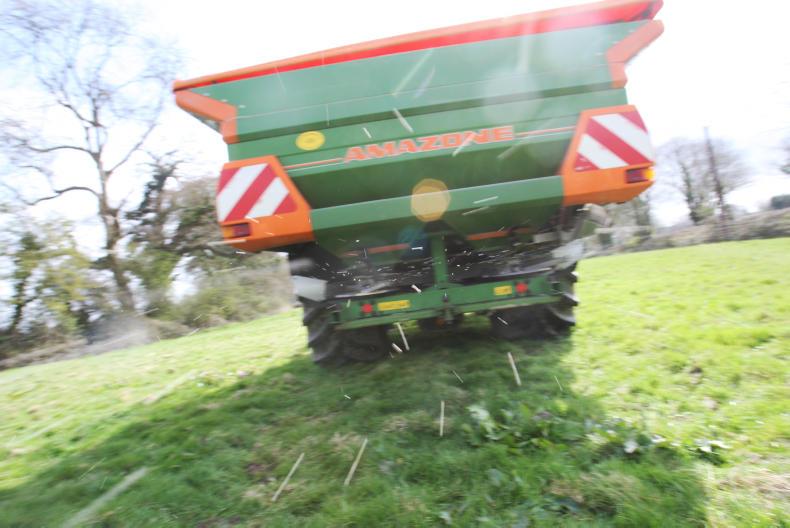
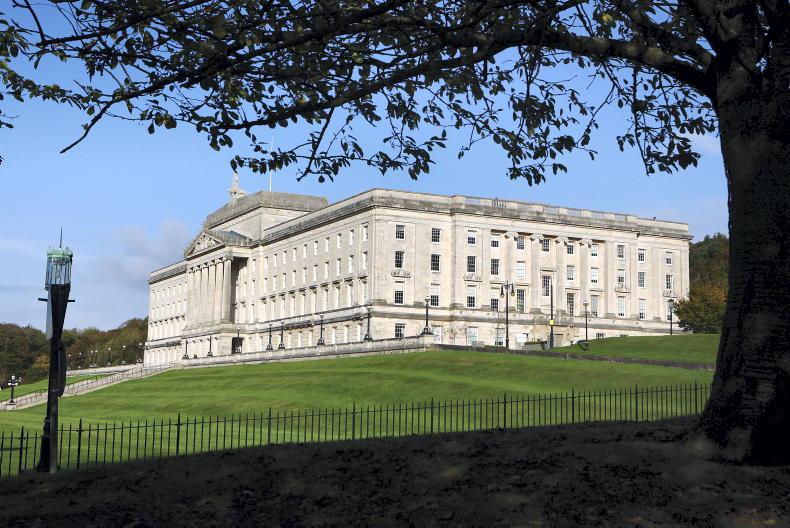
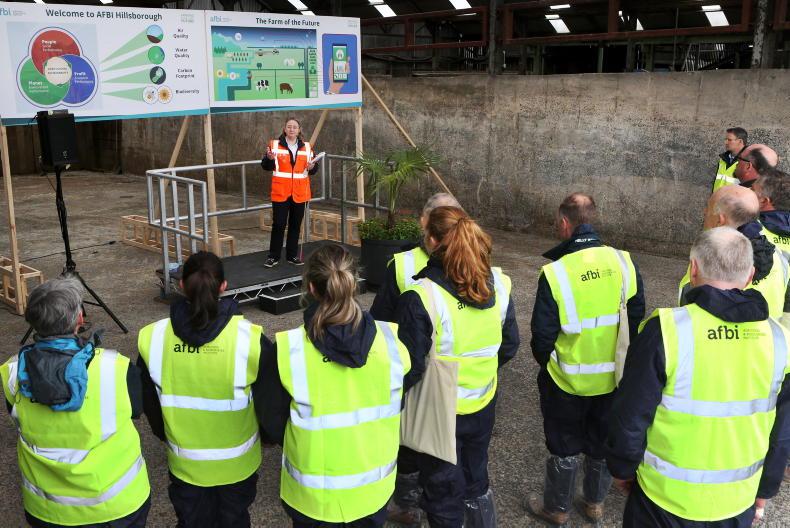
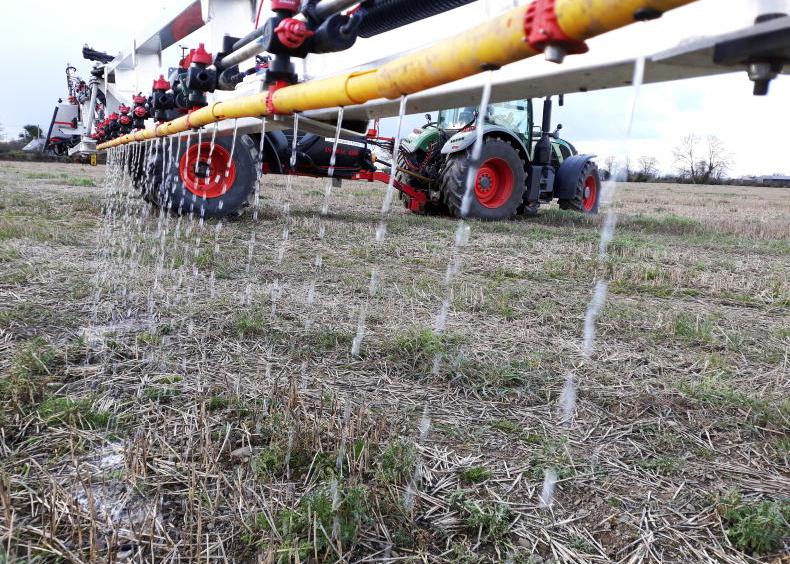
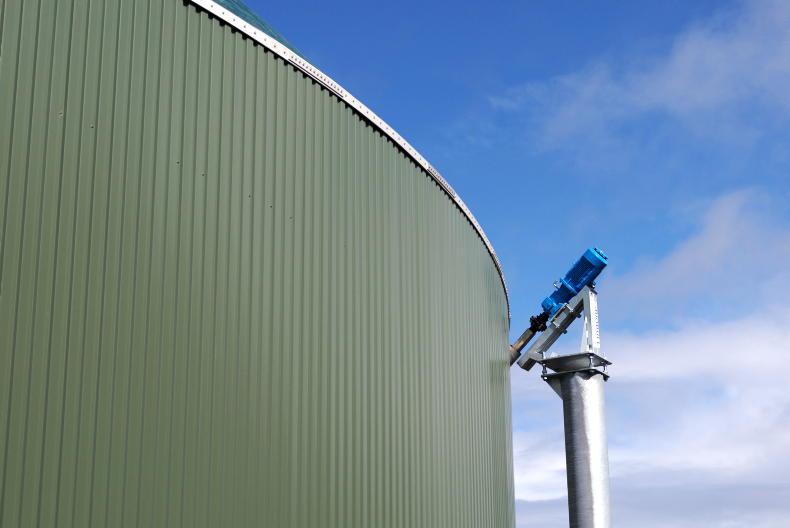
SHARING OPTIONS